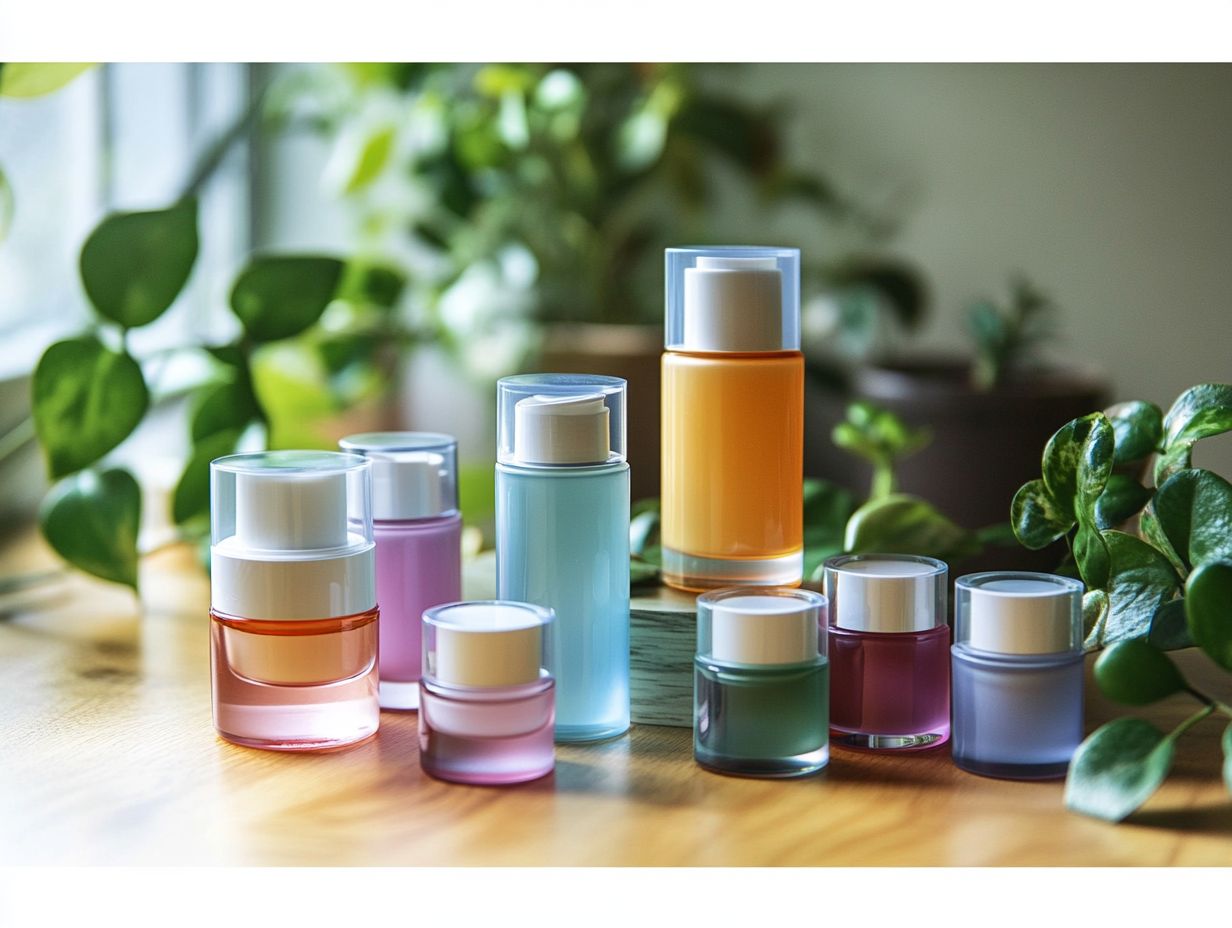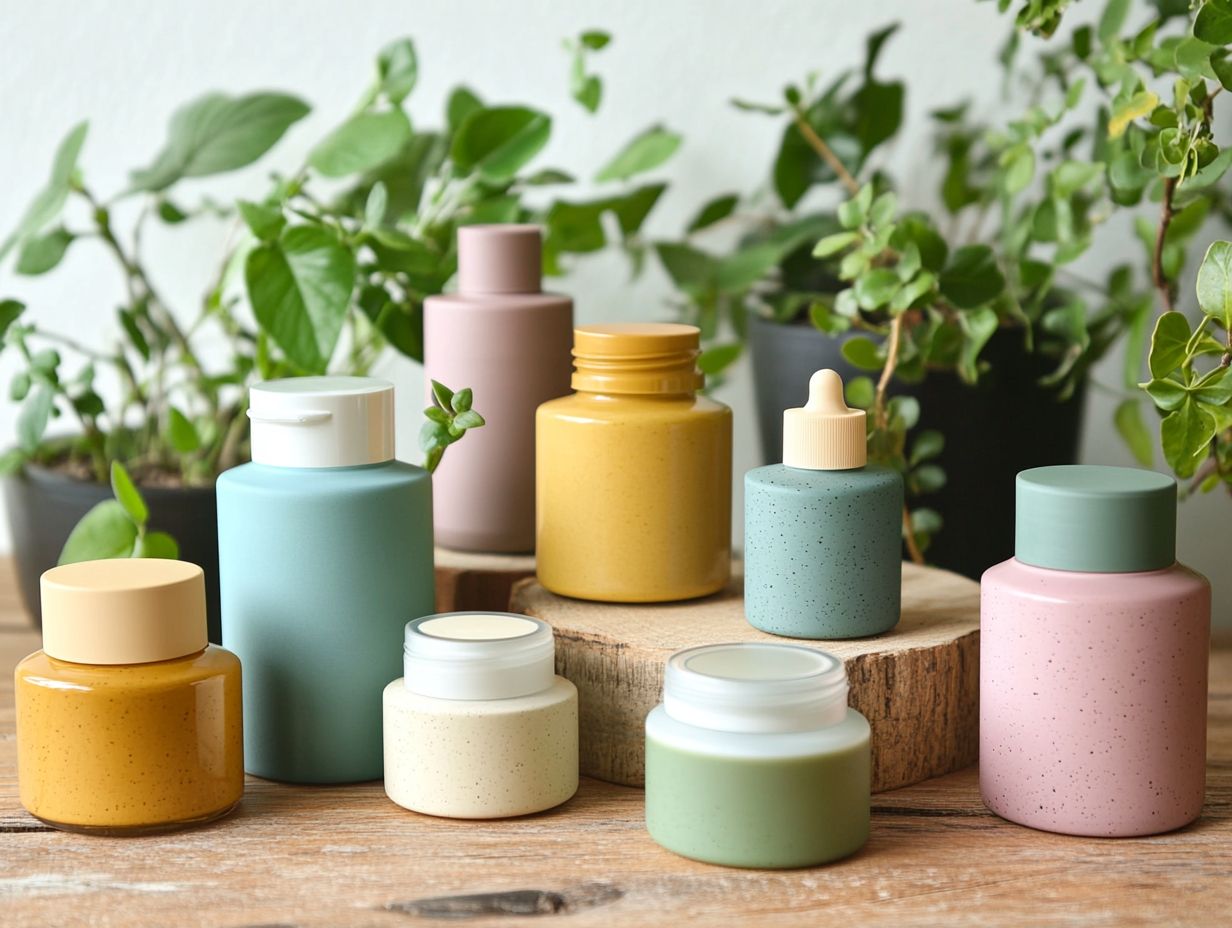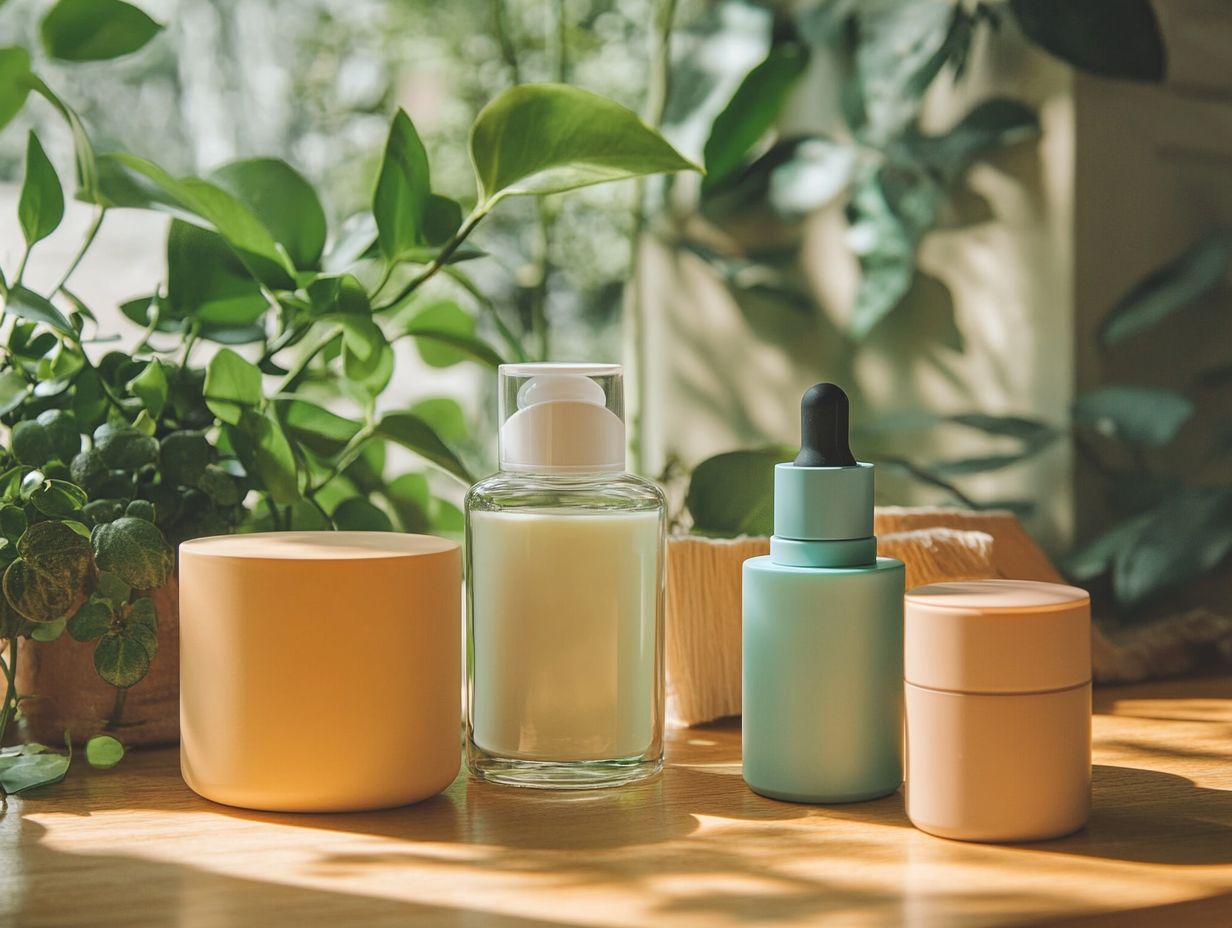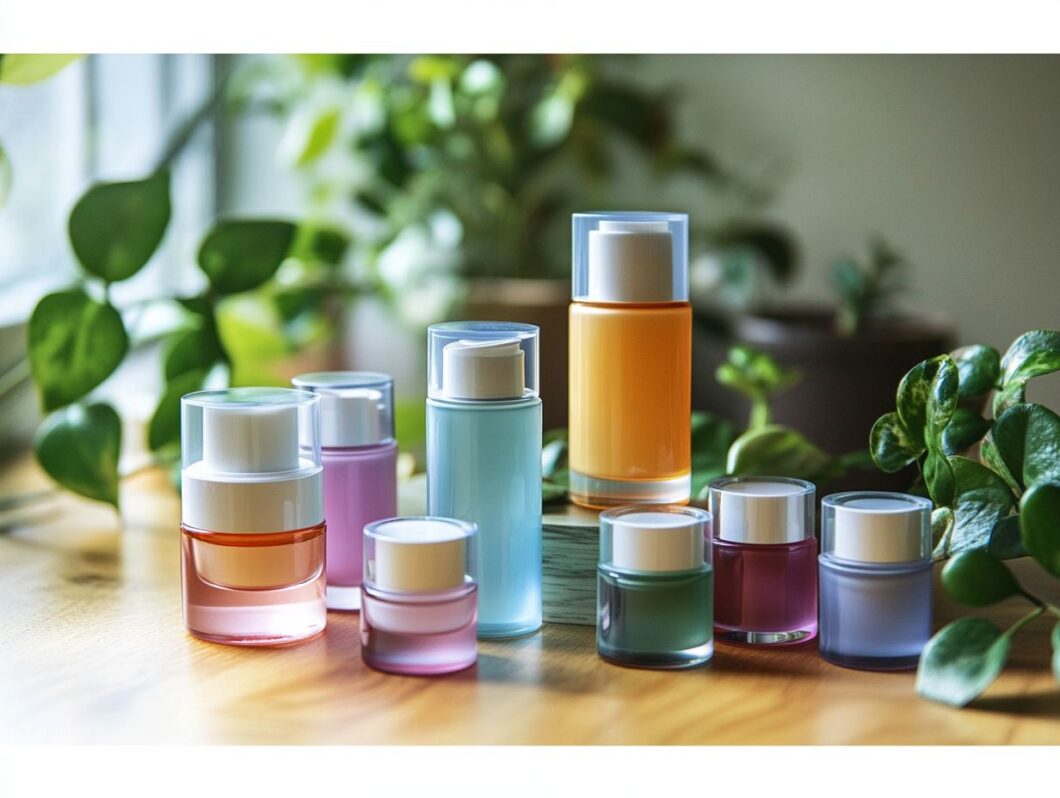In recent years, I have observed a significant shift within the beauty industry towards sustainability trends, with refillable beauty products emerging as a transformative solution. This innovative approach not only helps to reduce waste but also provides consumers with a more environmentally friendly way to enjoy their favorite cosmetics. Understanding the concept of refillable beauty and exploring its benefits-such as cost savings and a reduced environmental impact-are essential steps in navigating this evolving beauty market landscape. In this article, I will guide you through the leading beauty brands that are making notable strides in this area. I will also discuss how to seamlessly integrate refillable beauty into your routine and what the future may hold for this promising trend.
Key Takeaways:
The Concept of Refillable Beauty

Refillable beauty represents a significant innovation in the beauty market, focusing on the use of refillable containers and refill packaging designs that appeal to environmentally conscious consumers.
As luxury beauty brands like Fenty Beauty and Chanel introduce refillable options, the concept is gaining traction among beauty consumers who are actively seeking sustainable alternatives to traditional beauty products.
According to market trends reported by the NPD Group and Circana, refillable beauty products can lead to a notable increase in sales while simultaneously reducing plastic waste. This aligns with insights from Forbes, which highlights that these products are not only beneficial for the environment but also meet the rising consumer demand for eco-friendly solutions.
What is Refillable Beauty?
Refillable beauty represents an innovative approach to beauty products, featuring refill systems that enable consumers to replenish their favorite items without the necessity of purchasing new containers. This strategy not only minimizes plastic waste but also encourages sustainable beauty practices by promoting the use of refillable bottles and containers across various beauty categories.
In recent years, I have observed a significant increase in the popularity of refillable beauty, particularly among eco-conscious consumers who are striving to reduce their environmental impact. The range of products available in this format includes refillable skincare essentials such as serums and moisturizers, allowing users to enjoy their beauty routines while remaining mindful of resource consumption.
Refillable lipsticks and fragrances offer the luxury of fresh applications without the environmental guilt associated with single-use plastics, making it easier for customers to incorporate sustainability into their daily lives. This shift towards refillable options not only aligns with the growing trend of responsible consumption but also enhances brand loyalty, as consumers are increasingly inclined to support companies that prioritize eco-friendly practices.
Benefits of Refillable Beauty
I recognize that refillable beauty products present numerous benefits, both from an environmental and economic perspective, making them a progressively popular choice among consumers and luxury beauty brands alike.
By adopting refillable packaging solutions, brands can enhance their sustainability initiatives and substantially reduce plastic waste, which aligns with the increasing consumer awareness and demand for eco-friendly beauty products.
Additionally, I find that refillable systems often provide cost savings for consumers, as purchasing refills is generally more economical than buying new products.
Environmental Impact

The environmental impact of refillable beauty products is substantial, as these items are specifically designed to reduce plastic waste and foster a more sustainable approach to beauty consumption. By choosing refillable containers and packaging, I play a crucial role in minimizing the amount of single-use plastics that contribute to environmental degradation.
It is estimated that the beauty industry generates over 120 billion units of packaging annually, with an alarming percentage ending up in landfills or the ocean. Transitioning to refillable beauty products has the potential to significantly decrease millions of tons of plastic waste each year. Brands that adopt refillable designs often utilize eco-friendly materials, further advancing environmental initiatives. Recent analysis from National Geographic suggests that the beauty industry is increasingly seeking alternatives to reduce its heavy reliance on plastic packaging.
As a consumer, I benefit from high-quality formulations while also contributing to a larger movement focused on reducing carbon footprints and promoting circular economies. This approach demonstrates how individual choices can collectively create a positive impact on the planet.
Sustainability and Cost Savings
Refillable beauty products represent a significant advancement in sustainability while providing cost savings for consumers, making them an appealing choice in the beauty market. By opting for refills instead of purchasing entirely new products, I can enjoy high-quality beauty items at a more affordable price, all while supporting brands that are dedicated to sustainable practices.
For example, brands like Lush and Kjaer Weis highlight the ecological benefits of using less plastic, passing savings on to customers who choose refills over full-size products.
Lush’s innovative `naked’ packaging approach significantly reduces waste and inspires a movement towards zero-waste beauty solutions that consumers are eager to adopt.
Kjaer Weis has developed a system in which the initial purchase includes a stylish, reusable compact, while subsequent purchases come in eco-friendly refills that are often less expensive.
This model not only encourages repeat purchases but also fosters a deeper commitment to sustainability among users, demonstrating that environmental responsibility can align seamlessly with economic benefits. Market trends are shifting toward sustainability (as highlighted in a recent Forbes analysis).
Leading Brands in Refillable Beauty
The landscape of refillable beauty is influenced by a variety of leading brands that are at the forefront of sustainable practices and are establishing new benchmarks in prestige beauty and luxury beauty.
I have observed that brands like Ren Clean Skincare and Kjaer Weis are embracing refillable cosmetics, incorporating innovative packaging designs that align with the increasing demand for eco-friendly options among beauty consumers.
Overview of Popular Brands

I recognize that popular brands in the refillable beauty segment, such as Fenty Beauty and Chanel, are highly regarded for their commitment to sustainability and luxurious offerings. These brands have successfully integrated refillable beauty practices into their product lines, appealing to eco-conscious consumers who seek high-quality luxury goods.
Plus their impressive product ranges, many of these brands have developed innovative packaging solutions that prioritize recyclability. For instance, Fenty Beauty provides refillable lipsticks in a variety of stunning shades, enabling users to refresh their look without adding to plastic waste. Similarly, Chanel has introduced refillable foundation bottles that cater to a complete skincare routine, promoting responsible consumption.
These initiatives not only foster environmental awareness but also enhance the customer experience by combining convenience with a luxurious, guilt-free beauty routine. As more consumers prioritize sustainability, these forward-thinking brands are setting a benchmark in the beauty industry.
Innovative Refillable Packaging
I find that innovative refillable packaging is leading the charge in the beauty industry’s shift toward sustainability. Many brands are exploring various refill packaging solutions that not only attract consumers but also significantly reduce environmental impact.
This evolution is clearly reflected in the designs adopted by companies like Myro and By Humankind, which expertly balance functionality with aesthetics.
These brands demonstrate how packaging can enhance user experience through thoughtful design elements. For example, Myro provides a stylish, modern deodorant tube made from sustainably sourced materials, allowing consumers to easily refill it at home. This approach minimizes waste and encourages long-term use.
Similarly, By Humankind has launched a line of shampoos and conditioners in sleek, reusable aluminum containers, promoting a circular economy mindset.
Such intentional packaging not only satisfies the increasing demand for sustainability but also fosters an emotional connection with consumers. They appreciate the chance to make a positive impact on the environment while indulging in high-quality beauty products.
How to Incorporate Refillable Beauty into Your Routine
Incorporating refillable beauty products into my routine represents a significant step toward adopting a more sustainable lifestyle. I have found several effective tips that can facilitate a smooth transition.
By choosing refillable beauty items and understanding how to utilize refill systems efficiently, I can greatly reduce plastic waste and actively contribute to beauty market eco-friendly practices.
Tips for Making the Switch

Transitioning to refillable beauty products can be both simple and rewarding, and I have found several practical tips that facilitate a smooth shift.
I begin by identifying my favorite beauty products that offer refillable options and gradually integrate them into my daily routine. This approach allows me to embrace sustainable practices without feeling overwhelmed.
I also find it beneficial to research brands that are committed to sustainability, such as Lush or Kiehl’s, which offer a range of refillable skincare products and refillable makeup items.
To further encourage this initiative, I share my journey with others; I even consider hosting a pop-up swap event where friends can exchange products, explore refillable beauty brands, and discover refillable products together.
Highlighting the positive environmental impact of this change, such as reducing plastic waste and encouraging refill luxury, is another effective way to promote refillable beauty.
Engaging in discussions on social media about eco-friendly beauty practices and sharing my discoveries can help raise awareness. By fostering a community around refillable beauty, I aim to inspire others to join the movement toward a more sustainable lifestyle.
The Future of Refillable Beauty
The future of refillable beauty appears highly promising, as I observe market trends reflecting a growing consumer awareness and demand for sustainable beauty options.
As more brands embrace eco-friendly practices and innovate within the refillable beauty sector, including brands like Chanel, L’Occitane, and Method, I anticipate an expansion of product offerings that will align more closely with consumer values.
Predictions and Potential Impact
Predictions for refillable beauty indicate that it will significantly impact the beauty market, driven by sustainability trends and evolving consumer preferences. As I observe, consumers are increasingly prioritizing eco-friendly options, and brands that do not adapt may find themselves at a competitive disadvantage in this changing industry landscape.
The shift toward refillable beauty products not only reflects a heightened awareness of environmental issues but also signals a transformation in brand strategies. Companies will likely need to innovate their supply chains and packaging solutions to align with this trend, which could foster new partnerships and collaboration across various industries.
As consumers continue to embrace these sustainable alternatives, I anticipate a rise in demand for transparency regarding sourcing and production practices. This emerging consumer expectation may necessitate a comprehensive reevaluation of marketing tactics, compelling brands to effectively communicate their sustainability efforts while engaging with customers who are increasingly influenced by ethical considerations.


